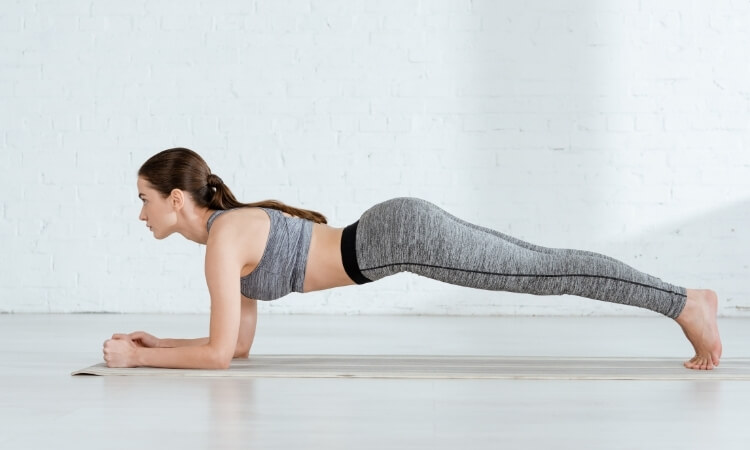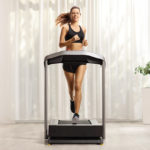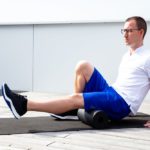You will most likely want to look like you are a lifter if you do. For many gym-goers, wanting to be half means proudly having arms that are so large they can see the seams on your sleeves. Large arms look impressive and show others that you can lift weights. Functionally, stronger and bigger arms help you bench press more weight, row heavier weight, and do overhead presses. They’re not just the tip, they’re also a means to another end (a lot of power).
Paul Aiken/Shutterstock
While most people think that doing standing curls and bench presses with a close grip is enough to target the smaller arm muscles, there’s actually a science behind building up your arms. There are four fundamentals that you can grasp to learn how to build larger arms.
Arm Coaching Tenants
Muscle mechanics is the way your muscles move your joints. Understanding how your biceps move will help you choose the right exercises to develop them.
Coaching Quantity: The number of reps that you do has a dose response relationship with hypertrophy. Additional coaching volume equals more muscle (assuming that you do not exceed your ability to improve).
Double development is the best growth model to use if you’ve never used it before. Double development is a method of increasing the load in your workouts only when you reach the upper limit for a certain rep range throughout all your goal sets.
Training Frequency. A meta-analysis concluded twice per week was better than once per week to maximize progress. However, frequencies of three or more could or may not be higher. (1) Because the biceps, and triceps, are smaller muscles you can train more easily, they will improve faster. It’s not unusual to train your arms three times per week. When you are at a volume level where you can pump out 15 to 20 units per session, you might want to break these eight-set classes into two or three separate classes.
Muscle Mechanics
Before you can prepare your arms correctly, it’s essential to understand their biomechanics. We’ll begin by covering their basic anatomy.
stihii/Shutterstock
Biceps
Three muscles are located in the anterior compartment of the upper arm. We’ll only have to pay attention to two of these muscles:
Biceps brachii
Brachialis
Coracobrachialis
Biceps Brachii
The biceps is composed of two heads, an extended head that is called the “outer,” and a shorter head called the “interior,” both of which originate from the scapula. They insert into the radius of the forearm. The biceps crosses both the elbow and shoulder, and can flex the elbow (aka a curl) or the shoulder (aka an entrance raise).
Brachialis
The brachialis is the stronger elbow flexor. The brachialis originates from the upper arm’s humerus and inserts into the ulna of the forearm. The brachialis does not affect shoulder movement; it only flexes your elbow.
The Triceps
By CFCF – Personal work, CC-BY-SA 4.0
The triceps muscle is the primary muscle in the lower arm’s posterior compartment. The triceps has three heads.
Lengthy Head
Medial head
The Lateral Head
The longer head is the more dense or thicker muscle. This can be seen when doing poses like a double front biceps. In the side triceps, the lateral head (or “horseshoe”) is the muscle you can see the most. The medial head is the deeper muscle and is not as visible on the ground as the other two.
The first action of the triceps involves elbow flexion. All three heads insert on the ulna of the forearm after crossing the elbow joint. The lateral and middle heads originate from the humerus of the upper arm. The long head crosses the shoulder joint, originating on the scapula.
Extra Concerns
Both the triceps and the biceps are involved in pulling and pushing movements, respectively. It’s common to hear that chest and back exercises are enough to activate the tris and bis. There are several studies that have shown pull-ups, rows and horizontal presses activate the triceps. However, pulling and pressing workouts are not enough to maximize biceps or triceps development.
When you rely on oblique motions exercises to engage the arms, your biceps will only receive a fraction of the stress. It’s still important to keep in mind that your arms are hit when you work your chest and back. You don’t need to do two or three biceps workouts if you train your back hard twice a week.
It’s probably better to concentrate more of your units at the average (8-12) or high (12-20) rep ranges, both for recovery purposes and to avoid redundancy. Because the triceps will also be targeted with any heavy vertical and horizontal urgent actions it is a good idea to concentrate more of your units in average (8-12) or high (12-20) rep ranges.
Hyperlinks are not available
Now that you have a better grasp of these arm training fundamentals, let’s return to the most important concern in arms training: exercise variation. It’s not enough to curl and increase your arms to work the muscles. There are other aspects to arm training. Your arm muscles will experience different levels throughout your complete range of motion.
Three factors are essential to stimulate the muscle tissues and their complete contractile range.
Mid-range: barbell curl, close-grip bench press
French press, incline dumbbells curls: Lengthened (stretched position)
Cable pushdown, high-cable curled
You say, “Good. I will make sure that each movement has a complete range of motion (ROM).” Properly, maintain up. It’s a good idea to lift only with the full range of motion (so congratulations), but you still need to select actions that engage the muscle the most in each of the three levels listed above. It is important to challenge your muscles throughout the entire range of motion.
Place all the pieces together
What’s next? You have probably already looked at the charts below and noticed that you still have a lot of work ahead. Do not panic. You’ll also see that many of the exercises below are performed with just two high-rep sets. The goal of this system is not to decimate your arms; rather, it’s to distribute a typical amount of work (10 units per muscle group) across all three ranges.
Coaching Definée
This routine is not difficult. You’ll first choose one main motion for your triceps, and another for your biceps. Since most people overlook the shortened or extended range, these workouts are aimed at the longer or shorter range. The first exercise is performed for four sets of 6 to 8 heavy-ish repetitions at a pace of 3-0-1-1 (reduced phase-pause on the bottom, lifting phase-pause up top).
Then, you will blast your arms using a circuit consisting of three actions (called a triset), each of which is aimed at the medium, extended, and shortened distances. The trisets have the same letters (“A” or “B”) on them. Use this template to guide your reps, sets, and training choices. You can substitute the below actions for others. Just make sure to hit every ROM.
Train Sequence Units & Reps Temp Relaxation Goal Vary B1) Cable Overhead Rope Extension 2 x 15 2110 60 seconds Lengthened C1) DB Spider Curls 2 x10-12 2011 15 second Shortened C2) Standing EZ Bar Curls 2 x12-14 2010 15 sec Mid-Vary C3) DB Preacher Curls 2 x15 2110 60 seconds lengthened
You should pay attention to the pace of each exercise, particularly in the triset sequence. There’s a pause between the contraction (hard) and the full stretch (longer stretch).
Prior to completing this exercise three times per week, focus on quality rather than quantity. You can do this by focusing on the quality of the work done twice a week for 6 weeks before taking it to the next level.
As you progress through this plan, it is important to change the focus of the first workouts. They should be shortened and then re-evaluated. The same will apply to the triset exercises. After a minimum of 2-3 rotations, you can then start to introduce the mid-range exercises as the main focus while the others are pushed to the back. Here’s how it should look:
Train Sequence Units & Reps Temp Relaxation Goal Vary B1) Cable Overhead Overhead Triceps Extention 2 x 10- 12 2110 15-second Lengthened C1) DB Cranium Crushers 2 x 12–14 2010-15-second Mid-Vary C3) Single Arm Rope Extensions 2 x 15-20 2011-60-second Shortened C1) DB Incline Curls 2 x 10- 12 2110 15-second Lengthened C2) Standing EZ Bar Curl
Dietary Concerns
You can eat a surplus of calories to maximize your muscle growth. However, you cannot expect to build a significant amount of muscle. Here are some tips on how to improve your diet:
Eat 5-10% above your upkeep (Caloric Surplus).
You should eat 4 to 5 times per day. It could be 3 meals and two shakes, or 4 meals and one shake. Make sure it suits your lifestyle and daily schedule, but keep your protein-feeding times frequent.
In your macros, you should aim to consume 35% protein/35% carbohydrates/and 30% fats. If you eat 3,000 calories per day, this would be 262.5 grams protein, 262.5 grains of carbs and 100 grams fats.
Extreme supplementation isn’t essential to develop. Multi-vitamins, fish oils and probiotics are a great base.











